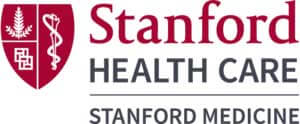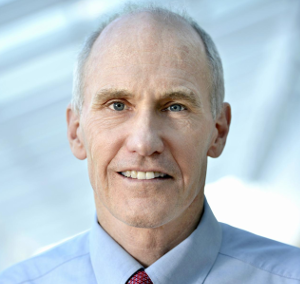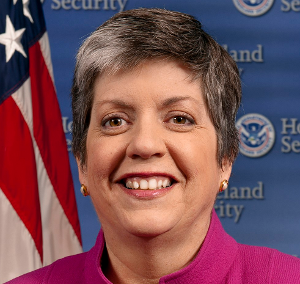Dr. Compton-Phillips oversees Clinical Care for Providence St. Joseph Health, focused on creating high-value health outcomes for every individual seen. Key interest areas include developing cutting edge care through research, advanced access to care through innovation, highly reliable care processes through physician partnerships and systems design, and building the healthcare workforce of the future. Dr. Compton-Phillips has an extensive background in directing patient care programs and leading health care organizations to broad-based improvements. Read her full bio.
Interview with Amy Compton-Phillips of Providence St. Joseph Health
Q: Genomic medicine is entering more hospitals and bringing with it non-invasive technology that can be used to better target and treat diseases. What are some key milestones that contributed to this trend? What technological advancements are driving this change?
A: Genomic medicine is poised to move quickly from the research realm into integration with healthcare delivery, but there is always a time lapse between technology advances and what we do with those advances.
A reference point I often use is from the technology industry. Moore’s Law, defined by Intel co-founder Gordon Moore in the mid-1960s, stated that computing power would increase by double roughly every two years. That held true for 40-50 years, along with a steady decrease in the cost to use the technology. Then around 2007 there was an explosion of cultural developments in the form of the sharing economy – for examples, the introduction of sharing services such as Uber, AirBnb, Hadoop and the iPod. It took decades for society to catch up with what cheap computing technology had to offer and to start deploying it in transformative ways.
In the field of genomics, the Carlson curve for DNA sequencing and cost is occurring significantly faster than Moore’s Law from the computing revolution. When you put the data points together of 1). The reams of genetic data we’re discovering in DNA and 2). The decreasing cost of sequencing, then what you have is faster sequencing and lots of data to work with in new and transformative ways for better health. Our ability to learn from and embed knowledge from genomics into medicine will continue to accelerate at a dramatic pace, and the corresponding explosion of cultural developments is occurring much sooner than we saw with the technology revolution.
Q: What are some specific examples of how genomic medicine is improving healthcare?
A: As a healthcare provider that also does research and clinical trials, Providence St. Joseph Health has expertise in the cancer field.
If you look back 25 years ago, the cancer death rate was 210 out of 100,000. Today the rate is 160 per 100,000.
Through improved care for people diagnosed with cancer, including reducing risk factors, we’re helping save lives with personalized medicine and treatment. Along with many health systems, we’re changing the direction on cancer prognosis. We’re introducing hope for something that was once a life-ending scenario.
The drop in cancer death rate is a powerful example of changing population dynamics. It’s a sign something important is happening with precision medicine. The potential for all other health use cases is vast and is just starting to be tapped.
Q: What is required to see a more wide-spread adoption in the clinical sector?
A: I see four areas for continued development when it comes to adoption of genomic medicine in clinical practice.
First, it’s going back to the Carlson curve and continuing to lower costs, especially for testing. We haven’t hit the right price point yet for clinical must-haves in testing for what I think of as “—omics,” which is not just the genome but also the proteins in blood and symbiotic organisms in our guts and skin that together form each patient’s genomic universe.
Second, we need to insure that insurance coverage mirrors the clinical necessity of testing.
Third, we need clear data ownership rights for individuals over their genomic information and data security for anyone privileged enough to access information about a human’s genome.
Fourth, our capacity to learn rapidly from information needs to expand. This will require clinicians and data scientists working side by side, computing power and algorithms that help us learn faster. At Providence St. Joseph Health, we’ve been integrating data scientists into our clinical leadership team for several years now, building a new muscle memory for our health system.
Q: There are some obvious hurdles we need to overcome. Can you speak to the hurdles and how we can best address them as a community within the ecosystem of genomic medicine?
A: To me the three biggest and most immediate hurdles are around reimbursement, access to genetic counseling and integrating new genomic knowledge into medical practice.
Reimbursement for genomic testing needs to move to a less expensive price point, and we are looking to insurance companies to reimburse in more use cases. Right now it’s pretty limited to cancer instances. As we expand genomic testing beyond the cancer health scenario, we’ll need a mechanism in place to cover how testing will be reimbursed.
In general, new technology tends to be adopted by people with money. Over time the price comes down as the technology becomes a commodity, then more people have access to it. Today, genomic testing beyond cancer is still an early adopter or niche service for the “haves” in society.
Genetic counseling is an option for patients that was non-existent a few decades ago and it brings new territory to cover in the physician-patient relationship. It is important to understand what people want to know and to identify the potential of what can be done with information. Care teams will want to make sure testing only reveals what people want to know, similar to how we approach prenatal testing.
For example, in prenatal care, some expecting parents want to know the gender while others desire more insight on genetic risks like carrying genes for Alzheimer’s or Huntington’s disease. The clinical sector needs to work more with universities on identifying and articulating the risks and trade-offs of information, and how to communicate that to patients.
Finally, integrating genomic know-how into medical practice is daunting in some regards. The genome is unfathomably large, and expecting every physician to know every gene is not going to be realistic. We’ll need effective and simple systems to help doctors understand what genomic testing reveals.
Q: Is there anything else you would like to share - in the context of Genomic Medicine - with the PMWC audience?
A: As a clinician and health leader, the place I’d like to see the genomic community start focusing more is the treatment of disease. The power behind genomics is more about transformation in health and wellness. At Providence, we’re focused on what we call scientific wellness, which is identifying risk before a disease manifests and creating a personalized health plan that addresses behaviors that contribute to that disease. We could actually start preventing diseases from ever becoming manifest. To me, that is truly unlocking the power behind genomic testing.
The Precision Medicine World Conference (PMWC), in its 17th installment, will take place in the Santa Clara Convention Center (Silicon Valley) on January 21-24, 2020. The program will traverse innovative technologies, thriving initiatives, and clinical case studies that enable the translation of precision medicine into direct improvements in health care. Conference attendees will have an opportunity to learn first-hand about the latest developments and advancements in precision medicine and cutting-edge new strategies and solutions that are changing how patients are treated.
See 2019 Agenda highlights:
- Five tracks will showcase sessions on the latest advancements in precision medicine which include, but are not limited to:
- AI & Data Science Showcase
- Clinical & Research Tools Showcase
- Clinical Dx Showcase
- Creating Clinical Value with Liquid Biopsy ctDNA, etc.
- Digital Health/Health and Wellness
- Digital Phenotyping
- Diversity in Precision Medicine
- Drug Development (PPPs)
- Early Days of Life Sequencing
- Emerging Technologies in PM
- Emerging Therapeutic Showcase
- FDA Efforts to Accelerate PM
- Gene Editing
- Genomic Profiling Showcase
- Immunotherapy Sessions & Showcase
- Implementation into Health Care Delivery
- Large Scale Bio-data Resources to Support Drug Development (PPPs)
- Microbial Profiling Showcase
- Microbiome
- Neoantigens
- Next-Gen. Workforce of PM
- Non-Clinical Services Showcase
- Pharmacogenomics
- Point-of Care Dx Platform
- Precision Public Health
- Rare Disease Diagnosis
- Resilience
- Robust Clinical Decision Support Tools
- Wellness and Aging Showcase
See 2019 Agenda highlights:
- Five tracks will showcase sessions on the latest advancements in precision medicine which include, but are not limited to:
- AI & Data Science Showcase
- Clinical & Research Tools Showcase
- Clinical Dx Showcase
- Creating Clinical Value with Liquid Biopsy ctDNA, etc.
- Digital Health/Health and Wellness
- Digital Phenotyping
- Diversity in Precision Medicine
- Drug Development (PPPs)
- Early Days of Life Sequencing
- Emerging Technologies in PM
- Emerging Therapeutic Showcase
- FDA Efforts to Accelerate PM
- Gene Editing / CRISPR
- Genomic Profiling Showcase
- Immunotherapy Sessions & Showcase
- Implementation into Health Care Delivery
- Large Scale Bio-data Resources to Support Drug Development (PPPs)
- Microbial Profiling Showcase
- Microbiome
- Neoantigens
- Next-Gen. Workforce of PM
- Non-Clinical Services Showcase
- Pharmacogenomics
- Point-of Care Dx Platform
- Precision Public Health
- Rare Disease Diagnosis
- Resilience
- Robust Clinical Decision Support Tools
- Wellness and Aging Showcase
- A lineup of 450+ highly regarded speakers featuring pioneering researchers and authorities across the healthcare and biotechnology sectors
- Luminary and Pioneer Awards, honoring individuals who contributed, and continue to contribute, to the field of Precision Medicine
- 2000+ multidisciplinary attendees, from across the entire spectrum of healthcare, representing different types of companies, technologies, and medical centers with leadership roles in precision medicine













